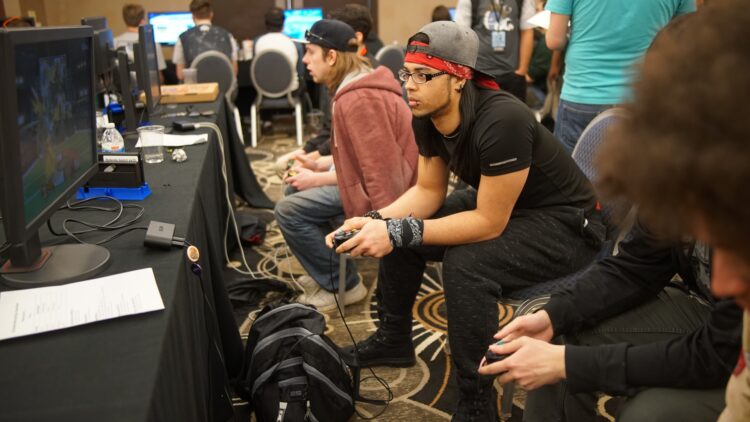There are many ways to define success, and in esports, success usually comes with the number of people watching, playing, and participating in a video game. Dota 2 is one of the best examples of success, bringing joy to millions of fans around the world who watch the game but also who visit dota-bet.com to place a bet on a game they love.
Placing a bet on the game aside, you will find Dota 2 to be a truly enjoyable esports product and one of the most successful games to date. But how did it all come to be? Data is one of those games that defined competitive video gaming.
In fact, you may argue that there was no competitive gaming before Dota arrived if you exclude Starcraft, of course, which is the forefather of all modern video games, played in an esports capacity. In fact, you can argue that without Dota and Starcraft, there would never have been competitive gaming.
This brings us to the first question, and that is, how do you build a successful esports ecosystem in the long run?
Dota and the Power of the Community
Dota started very hesitantly and in a form that is hardly defined. The game was a simple modification of Warcraft, a Blizzard game, and as such it was long-time ignored by the community. However, there was a core team of fans who kept pushing the game and popularizing it day after day, week after week.
In fact, you may argue that the game is what it is because of these idealists in the early days of the game who doggedly pursued the game, loved it, showed it affection, and wanted it to see it grow into something big.
Source

Well, it’s safe to say that they have all succeeded, bringing around one of the most amazing grassroots communities around a game. Grassroots had a huge role to play in the development of the successful ecosystem that Dota enjoys today, and guess what, a lot of this has rubbed off on how we see and experience Dota 2 today.
In fact, tournaments are organized to satisfy over-demanding and over-caring fans, and that is good fans. Organizers are fully aware that fans have high expectations, and this has kept a lot of the Dota 2 ecosystem in check.
Events such as We! Play Bucharest and Epic League are just two brilliant examples of how the community can influence and even oblige content and esports tournament creators to live up to some of the highest standards in esports production.
In fact, you can argue that there is no other game that enjoys the same level of scrutiny and detail as does Dota 2.
Money Matters, But Use It Smartly

All things considered, to succeed, a game needs to get a lot of support from its creators unless it’s Starcraft, which is a revolutionary, scalable esports experience beyond one’s wildest imagination.
Players who are determined to make it to the top will need a proper game to pick, and Dota 2 is definitely it. How so, you may wonder? It’s rather simple – Valve is willing to put the necessary resource.
When Dota 2 first arrived out there, the game was backed by its developers who vowed $1 million in prize money, an amount unimaginable for any sort of video game. And, better, that amount was only shared between 16 teams at the time, making for an exceptional overall experience and one of the most unique and highly-contested Dota 2 finals of all-times.
Nevertheless, this first jolt of the monetary jab, along with the added momentum of a fan-driven game, culminated in years of successful events, even if the Dota Pro Circuit has come under a lot of criticism of late.
Players these days are looking at winning a chunk of a $40 million prize pool, the highest for a single-event prize pool can boast. Not even Riot Games with their League of Legends or Epic Games with Fortnite come close.
Money matters in building a successful ecosystem for esports, that is as true as it has always been.
Shaping the Esports of the Future

Dota 2’s success story is definitely to be studied and held as an example of successfully leveraging the community to achieve preeminence in esports. The game has started as a minnow, and if you had told anyone that you could actually become a millionaire out of playing Dota or any other video games 15 years ago, they would have laughed.
Yet, today, the potential of esports and the esports ecosystem is almost impossible to predict. It’s going upward, and that is a fact. The growth will be accelerated in the next decade, which begins in less than a few weeks, and the community is surely excited to see what is next for Dota 2.
The game will need to continue to evolve in order to remain competitive. Graphics will have to be updated, and the gameplay will have to continually bring new challenges to make the experience all the more fun.
Of course, the success of Dota 2 will remain based on its fans. Should the fans decide to switch games and go with some other title, this could be the end of the game. However, we are not seeing this happen any time soon. Put plainly, Dota has been here for almost 20 years now, and it seems to be an unstoppable phenomenon that few people can resist.
Is a Career in Dota 2 Viable for You?
If you are looking to be part of the Dota 2 community but don’t necessarily want to be a player, there are many opportunities to be part of the family. As it turns out, the esports ecosystem is developing rapidly, and this means that it lacks trained professionals.
Today, content creators, writers, and video editors are in high demand and as such, there are many openings for you to actually enjoy yourself and become a part of the community you have grown up with.
Dota 2 and video gaming is here to stay, and esports will create many new professional opportunities. Today, Dota 2 is even taught in colleges where professional gamers go to study the game and master the title to the point where they are able to either become coaches or analysts or fulfill many positions within the esports ecosystem.
There are many opportunities for talented individuals in esports today, and you will definitely be happy to find your place within the Dota 2 community as a professional or as a fan. You can rest assured you have equal weight!
 Hi Boox Popular Magazine 2024
Hi Boox Popular Magazine 2024



